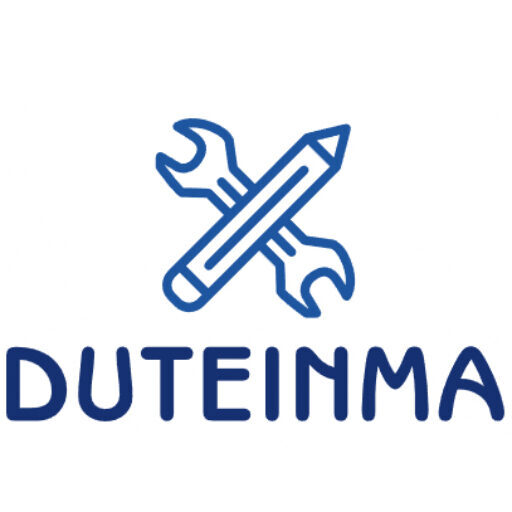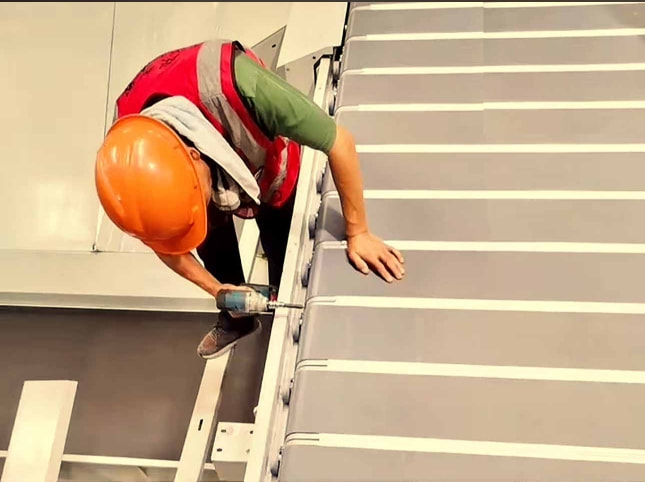الدليل الكامل لتركيب المعدات اللوجستية
اجعل مستودعك أسرع, أكثر ذكاءً, وأكثر أمانا
يعد تركيب المعدات اللوجستية أمرًا أساسيًا حيث يتوقع العملاء تسليمًا سريعًا ودقيقًا في عالم اليوم سريع الحركة.
يتطلب تركيب المعدات اللوجستية أكثر من مجرد وضع الآلات، بل يحتاج إلى خطة, الأدوات الصحيحة, والخبراء المدربين. يشرح هذا الدليل كل خطوة بوضوح.
ينطبق تركيب المعدات اللوجستية سواء كنت تقوم بترقية مستودع صغير أو بناء مركز كبير لتلبية الطلبات - سيساعدك هذا الدليل.
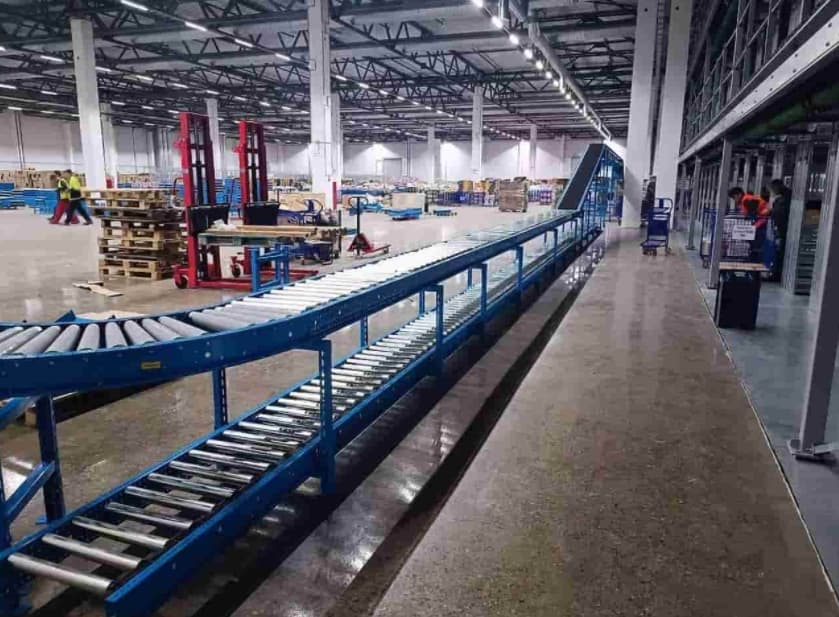
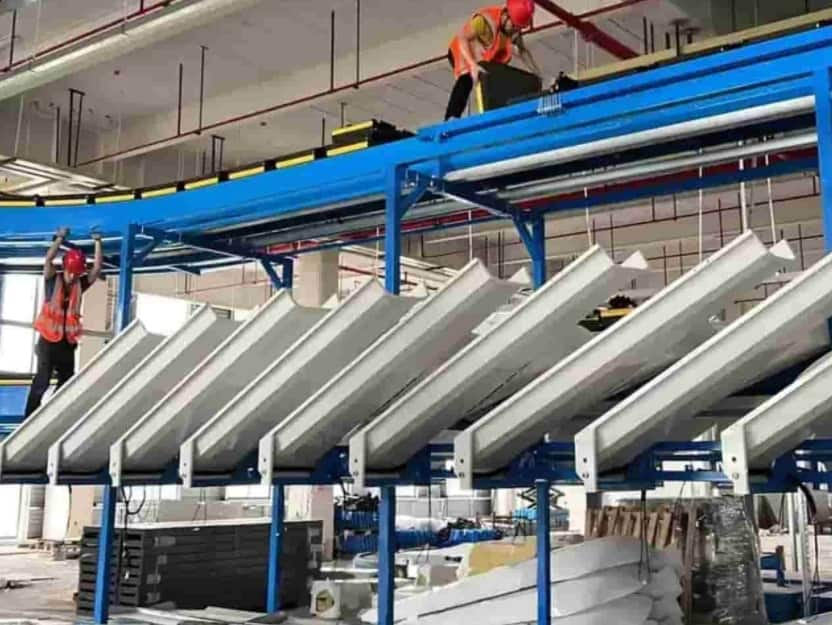
ماذا يعني "تركيب المعدات اللوجستية".?
دعونا نبقي الأمر بسيطا. المعدات اللوجستية هي أي شيء يساعدك على التحرك, نوع, أو تخزين العناصر في المستودع الخاص بك. وهذا يشمل:
سيور ناقلة
أنواع
آلات الرفع
رفوف ورفوف
أنظمة التخزين الآلي
وسائل التثبيت إنشاء هذه المعدات في المساحة الخاصة بك. ويشمل التخطيط, مبنى, الأسلاك, الاختبار, والتدريب.
أحسنت, يمكنها تسريع عملك, اجعل فريقك أكثر أمانًا, وتساعدك على خدمة العملاء بشكل أفضل.
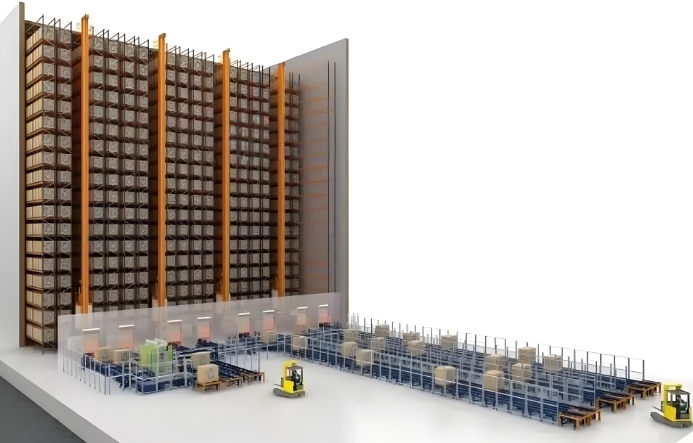
خطوة 1: التخطيط – الخطوة الأكثر أهمية
التخطيط هو الجزء الأول والأكثر أهمية في عملية التثبيت. بدون خطة جيدة, يمكنك إضاعة الوقت والمال. إليك ما يجب التفكير فيه:
قياس المساحة الخاصة بك
قبل تثبيت أي شيء, عليك أن تعرف المساحة الخاصة بك. قياس المستودع الخاص بك. فكر في المكان الذي تأتي فيه العناصر, حيث يتم تخزينها, وأين يخرجون.
خريطة التدفق
خطط لكيفية انتقال البضائع من منطقة إلى أخرى. التدفق السلس يقلل من التأخير ويحافظ على سلامة العمال.
اختر المعدات المناسبة
ليس كل مستودع يحتاج إلى نفس الأدوات. على سبيل المثال:
يساعد الحزام الناقل إذا قمت بنقل الكثير من الصناديق الصغيرة.
يعد نظام نقل البليت رائعًا بالنسبة للحجم الكبير, العناصر الثقيلة.
تساعدك آلات الفرز على التعامل مع حجم الطلب المرتفع.
خطط لميزانيتك وجدولك الزمني
اكتب المبلغ الذي تريد إنفاقه والمدة التي يجب أن يستغرقها ذلك. أضف وقتًا إضافيًا في حالة استغرق الأمر وقتًا أطول من المخطط له.
اتبع قواعد السلامة
تحقق من قوانين البناء, قواعد السلامة من الحرائق, ومعايير المعدات. تحدث إلى مفتشي السلامة المحليين إذا لزم الأمر.
التخطيط الجيد الآن يعني مشاكل أقل لاحقًا.

خطوة 2: أنواع المعدات اللوجستية
تحتاج المستودعات المختلفة إلى أدوات مختلفة. فيما يلي الأنواع الأكثر شيوعًا من المعدات اللوجستية:
| نوع المعدات | ماذا يفعل | أفضل ل |
|---|---|---|
| أنظمة النقل | ينقل العناصر عبر المستودع | ترتيب التعبئة, مراكز الفرز |
| رافعات تكديس | يخزن العناصر في مكان مرتفع في الرفوف | تخزين عالي أو بارد |
| أنظمة الانتقاء | يساعد الموظفين في العثور على العناصر والاستيلاء عليها بشكل أسرع | التجارة الإلكترونية, الوفاء بالتجزئة |
| أنواع | يوجه العناصر إلى المكان الصحيح | مراكز التسليم ذات الحجم الكبير |
| وحدات الرفوف الذكية | يقوم بتخزين العناصر والعثور عليها تلقائيًا | المستودعات الذكية أو الآلية |
يمكن لهذه المعدات قطع الأخطاء, زيادة السرعة, وخفض تكاليف العمالة.
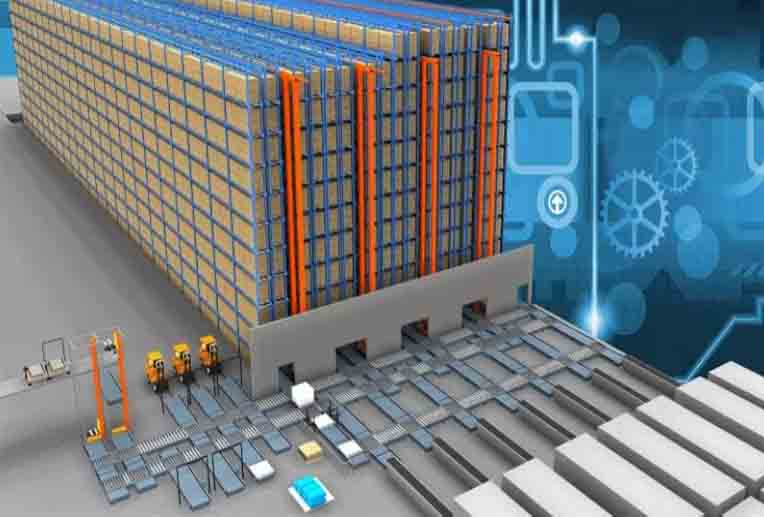
خطوة 3: عملية التثبيت
بمجرد أن يكون لديك الخطة والمعدات المناسبة, حان وقت التثبيت. يحدث هذا عادة على مراحل قليلة:
1. إعداد الموقع
تنظيف الفضاء
قم بتسوية الأرضية
ضع علامة على المكان الذي ستذهب إليه المعدات
تأكد من القوة, إنترنت, وأنظمة السلامة جاهزة
2. تثبيت وتجميع
تفريغ المعدات
إعداد الرفوف, رفوف, أو الآلات
قم بربطها أو تثبيتها على الأرض
3.قم بتوصيل الطاقة وعناصر التحكم
آلات الأسلاك للكهرباء
تثبيت البرامج أو لوحات التحكم
الاتصال بنظام إدارة المستودعات الخاص بك (WMS)
4. اختبار كل شيء
قم بإجراء اختبار باستخدام عناصر حقيقية
تحقق من الحركة السلسة, سرعة, والدقة
إصلاح أي أخطاء أو مشاكل
5.تدريب فريقك
تعليم العمال كيفية استخدام الأنظمة الجديدة
مراجعة خطوات السلامة والتوقف في حالات الطوارئ
أعط بسيطة, تعليمات واضحة
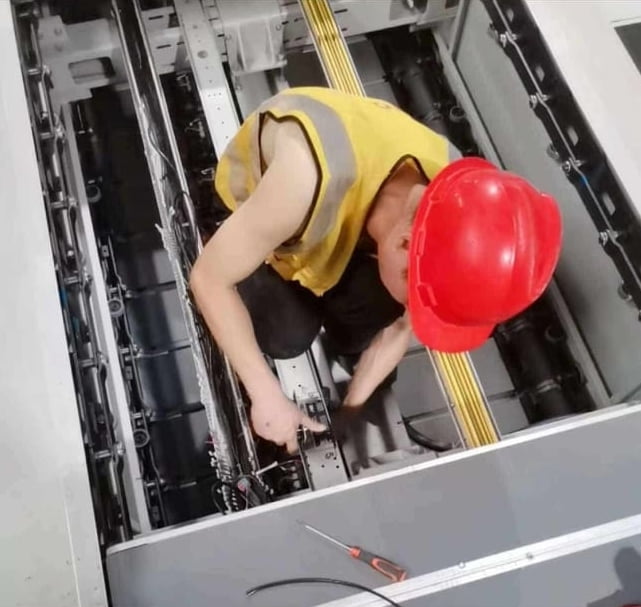
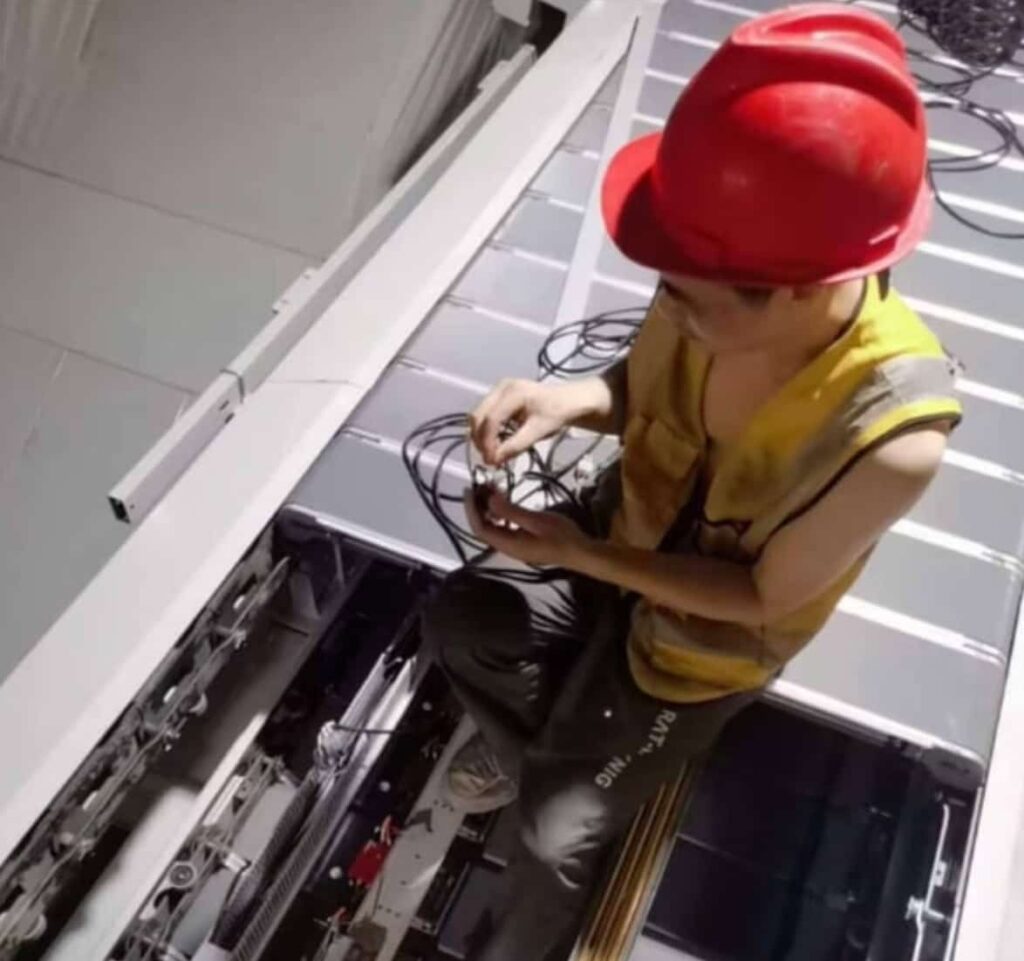
خطوة 4: يفحص, يحافظ على, وتحسين
أجهزتك تعمل – رائع! الآن احتفظ بها بهذه الطريقة.
الصيانة الدورية
تحقق من أجهزتك كثيرًا. تشديد البراغي, أحزمة نظيفة, وفحص الأسلاك.
قم بعمل قائمة مرجعية والتزم بها. إصلاح المشكلات الصغيرة أرخص من انتظار فشل كبير.
تدريب الموظفين
استمر في تدريب فريقك. يحتاج العمال الجدد إلى تعلم الأنظمة. قد يحتاج العمال الأكبر سنا إلى التحديثات.
تحديثات النظام
كما ينمو عملك, قد تحتاج إلى تغيير الإعداد. خطط للترقيات مقدما.
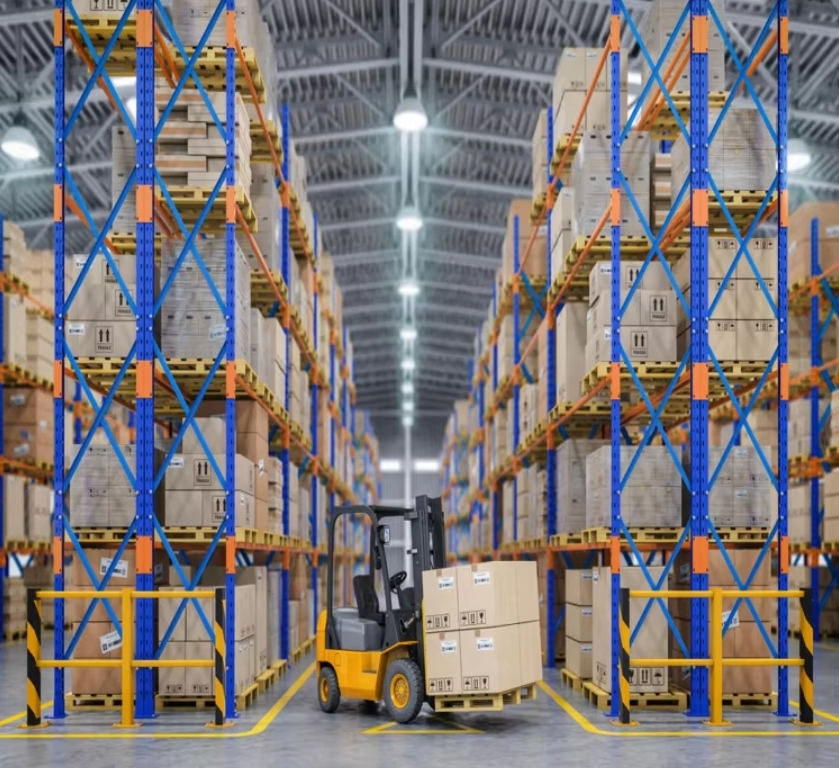
❓ الأسئلة الشائعة (الأسئلة الشائعة)
هل يمكنني تركيب المعدات اللوجستية أثناء تشغيل المستودع الخاص بي؟?
نعم. يمكنك القيام بذلك بخطوات أو العمل أثناء الليل أو عطلات نهاية الأسبوع لتجنب التوقف عن العمل.
هل من الآمن تركيب المعدات بنفسي؟?
للأدوات الصغيرة, ربما. للآلات الكبيرة أو الأتمتة, استخدم دائمًا محترفين مدربين.
ماذا يحدث أثناء التثبيت الاحترافي?
سوف يقومون بالتوصيل, ثَبَّتَ, امتحان, وتدريب فريقك. يقدم البعض أيضًا دعمًا بعد التثبيت.
ماذا لو انكسر شيء ما لاحقًا?
اسأل عما إذا كان مزود الخدمة الخاص بك يتضمن الضمان والدعم. يمكن أن تساعد عقود الصيانة أيضًا.
لماذا يجب عليك العمل مع المحترفين
إن تركيب المعدات اللوجستية لا يشبه بناء الأثاث. يتطلب المهارة ومعرفة السلامة.
يمكن لفريق محترف:
إنهاء المهمة بشكل أسرع
تجنب تلف المعدات
تساعدك على البقاء متوافقا مع القوانين
تدريب فريقك بالطريقة الصحيحة
تقديم الدعم على المدى الطويل
إنه يستحق الاستثمار.
📣 الخواطر النهائية: استعد لمستودع أكثر ذكاءً
يعد تركيب المعدات اللوجستية أحد أفضل الأشياء التي يمكنك القيام بها لتنمية أعمالك.
انها تساعدك:
نقل البضائع بشكل أسرع
التعامل مع المزيد من الطلبات
حافظ على سلامة فريقك
خفض التكاليف الخاصة بك مع مرور الوقت
ولكنه يعمل فقط عندما يتم الإعداد بشكل صحيح. خطط جيدًا, تثبيت ذكي, والحفاظ عليها مع مرور الوقت. تريد المساعدة? تحدث إلى خبرائنا وحدد موعدًا لتقييم المستودع مجانًا اليوم.
